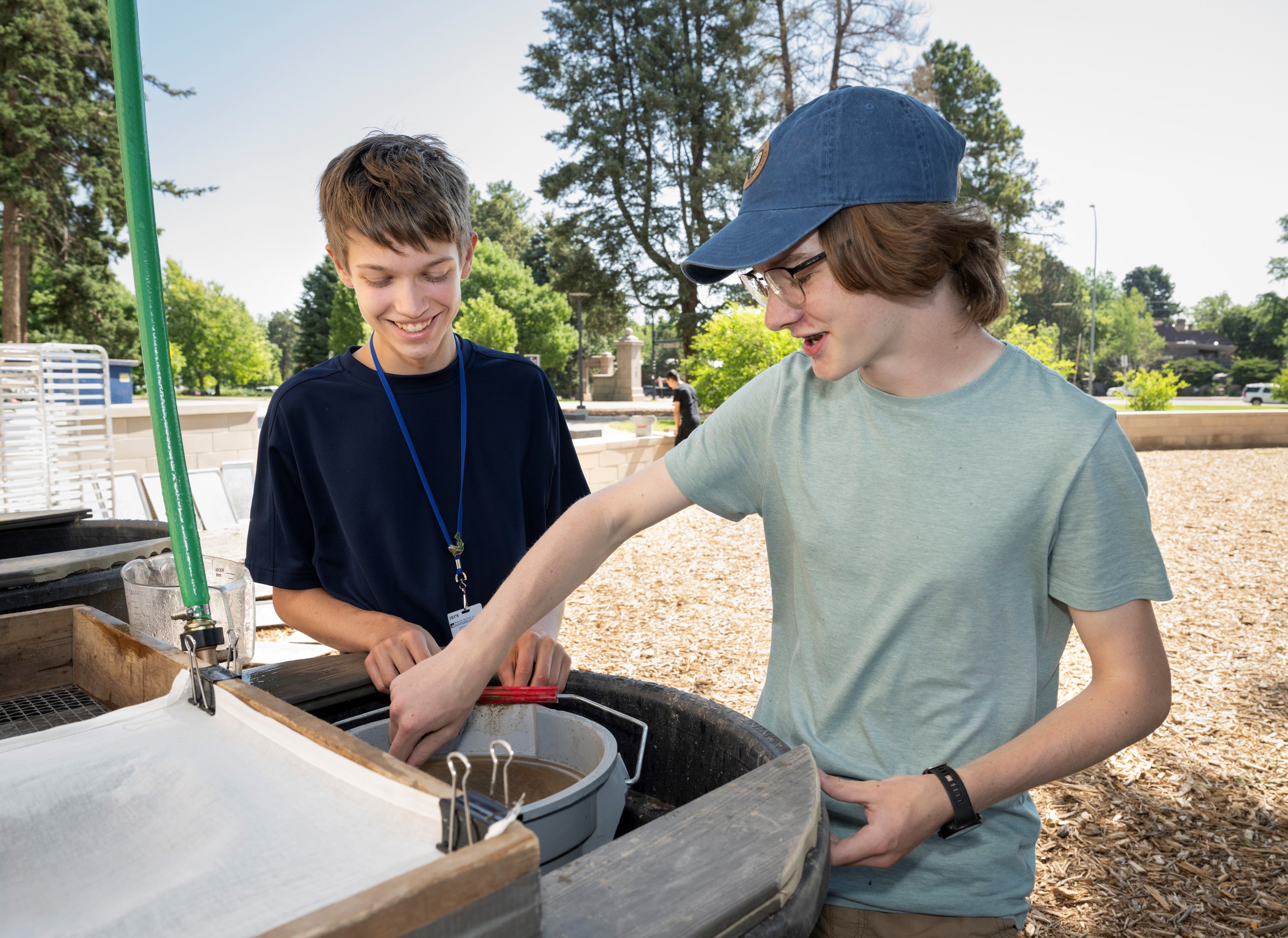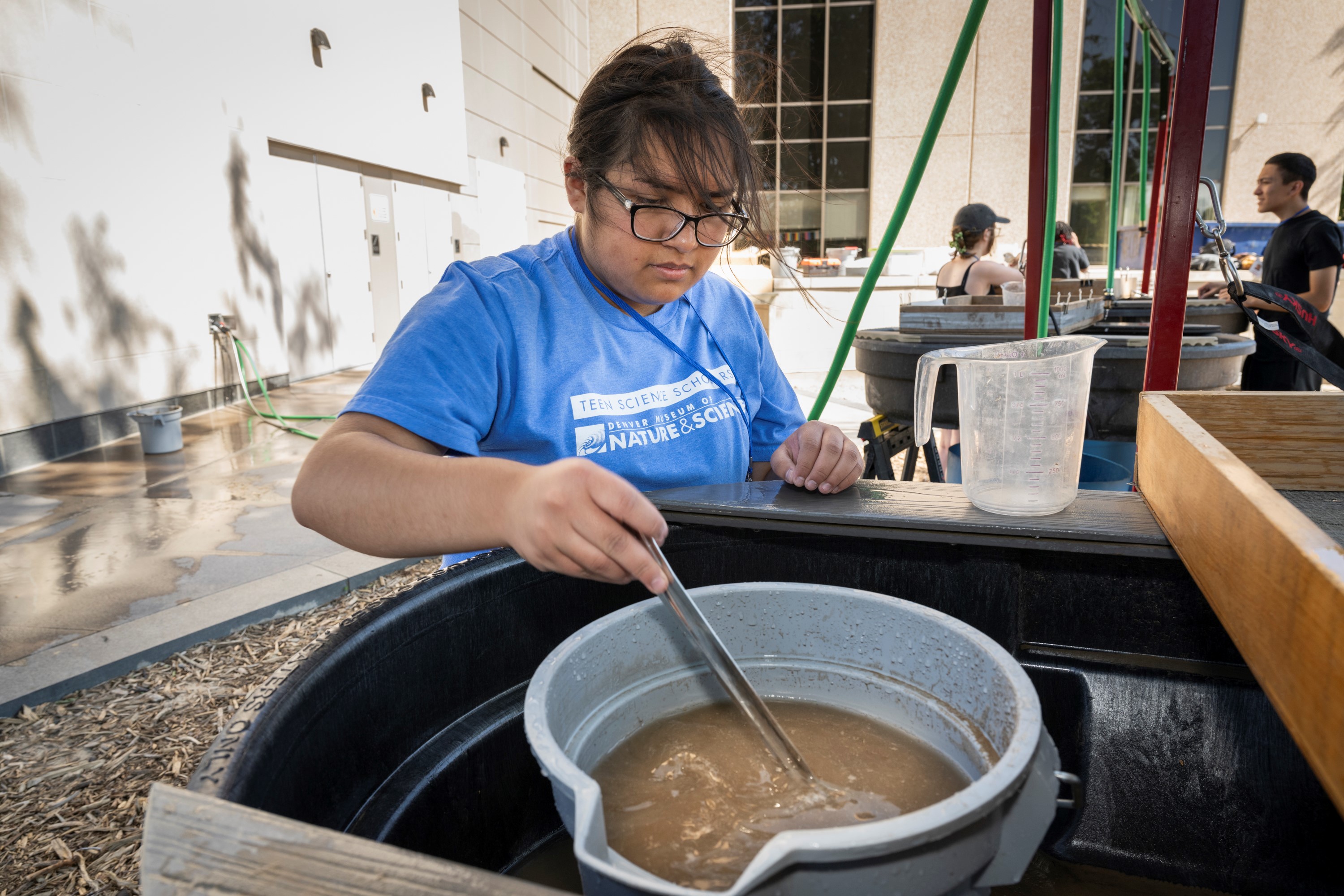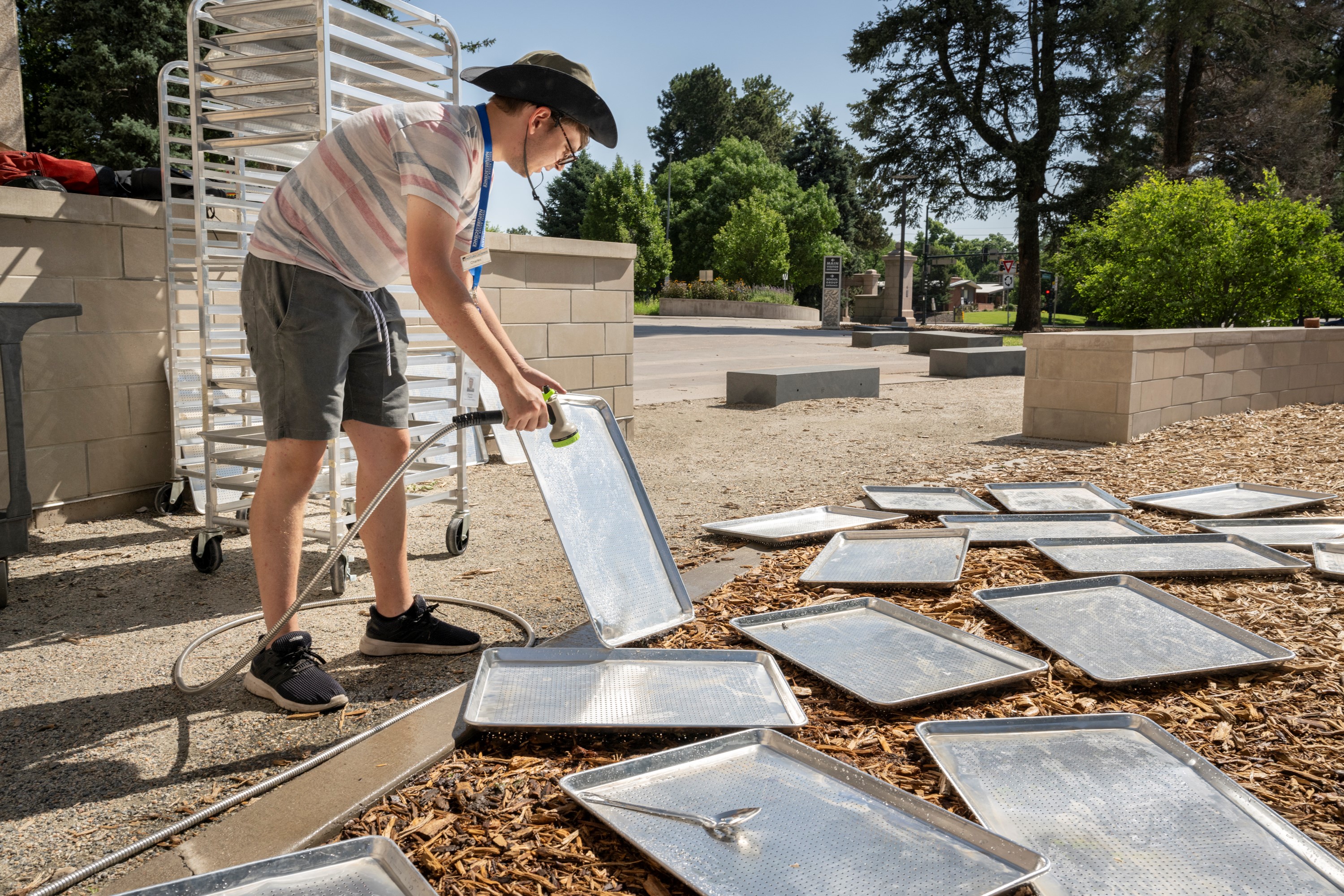
FALL 2023
Not many high school students can say that they helped to make scientific discoveries over their summer vacation. But, the students who participated in the hands-on Teen Science Scholars summer internships at the Denver Museum of Nature & Science this past summer can.
Over this past summer, 10 students led by Anthropology Curator Dr. Erin Baxter tapped the Museum’s tools and resources and their own hard work and curiosity to assist anthropologists in tackling big questions about Colorado’s past. Through their efforts, these dedicated students embarked on serious inquiry, helping to answer big picture questions such as what Denver's City Park looked like in the early 1900s, the seasonality of bison hunts 10,000 years ago and shed light on Pueblo Indian rituals from 1,000 years ago.

Young scientist works in an outdoor archaeobotanical flotation laboratory. (Photo/ Rick Wicker)
The students started their summer anthropological field investigation next door to the Denver Museum of Nature & Science at Denver’s City Park. Using historical documents, old maps and photographs found during archival investigations at History Colorado and the Denver Public Library, the students reconstructed the layout of the City Park as it once appeared.
From there, the young anthropologists set out to find remnants of hidden, underground history with ground-penetrating radar (GPR). Setting up 20-by-20-meter grids, the students walked back and forth over square sections of City Park with the GPR, looking for remnants of demolished grandstands from an early-1900s horse racing track, old roads and anything else hidden beneath the park’s grassy surface.
“We found the structure of the grandstands and some other really interesting anomalies,” said Teen Science Scholar Max Gerd. “Before the summer, I didn't really know anything about ground penetrating radar. This summer program opened a new perspective that was fascinating.”
"This summer program opened a new perspective that was fascinating."
On a separate project, Baxter highlighted how the students were helping advance real science investigations that had been put on the backburner because there was nobody to do the labor-intensive work. The students constructed and operated an outdoor archaeobotanical flotation laboratory complete with troughs, basins, buckets, hoses and screens. Their efforts working toward providing valuable insights into two archaeological sites: the Jones Miller bison kill site in Eastern Colorado and the W.S. Ranch Ruin in West-Central New Mexico.

The young anthropologists separate the dirt from the data. (Photo/ Rick Wicker)
Soil samples collected from these sites in the 1970s, brim with useful information about the climate, ecology and activities of the era. The task of the Teen Scholars was to “float” these soil samples to separate dirt from data and extract invaluable organic data in the form of charcoal, seeds, pollen and bone. From here, the organic data undergoes microscopic analysis to help to answer questions about the seasonality of bison kills, the number of hunting episodes and other mysteries from Colorado’s ancient past.
“We're making inroads in the projects that have been languishing for half a century,” said Erin Baxter. “It was something that we needed to do but hadn’t yet because honestly, it’s an incredibly onerous, time-consuming process to get this work done. But when you throw 10 energetic science-minded teenagers at it, it gets done quickly.”

Students made progress on anthropological research that had been languishing for decades. (Photo/Rick Wicker)
Teen Science Scholar Daniel Wight said the experience has made him more likely to consider a career in science and anthropology, especially work that gets him out in the field. His top recommendation for next year’s group of Teen Science Scholars?
“Reach out to the Museum program leaders and mentors while you’re here because they’re a great resource and can teach you a lot,” said Wight. “If any of the different things you’re learning about pique your interest, then don’t be afraid to go out and ask questions and take advantage of all opportunities this program has to offer.”
In a summer of exploration and discovery, the Teen Science Scholars have not only unearthed hidden stories from Colorado's past but have also kindled their own passions for science and anthropology. As these budding scientists pave the way for the future, their experiences serve as an inspiration to explore the world of science, ask questions and seize opportunities for discovery.
---
Read more here if you're interested in getting involved in this summer program: https://www.dmns.org/about/teen-science-scholars/
